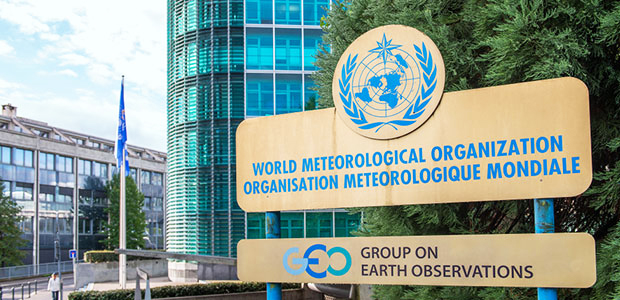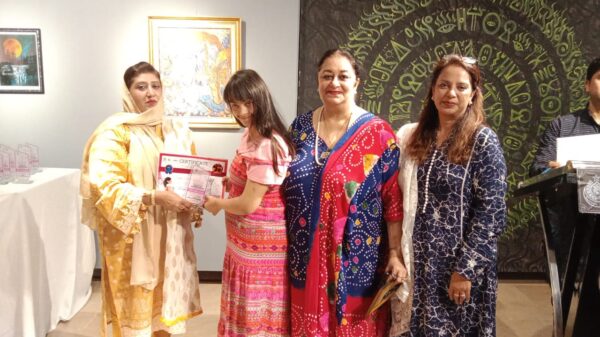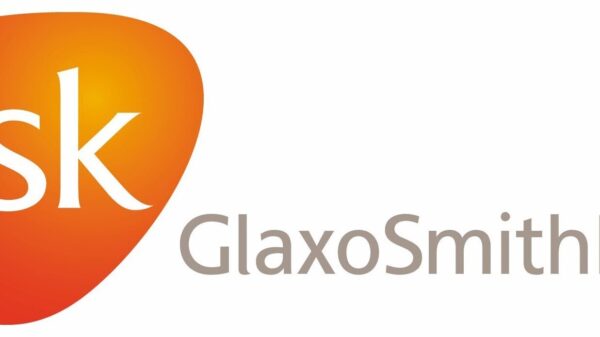Evidence of the climate disaster that is almost upon us being human-made keeps piling up on almost a daily basis, but inexplicably, governments and societies worldwide are either not doing enough or doing nothing at all to avert the impending crisis of biblical proportions.
Evidence of the realization that urgent and concrete climate action is not a luxury but a dire necessity for human kind is sketchy at best. Many people in many places – including some government leaders – are making the right noises. But when it comes to action, the same government leaders leave much to be desired.
Take, for example, the recent report by the United Nation World Meteorological Organisation. Titled “2021 State of Climate Services: Water”, the report presents the findings of a WMO assessment covering 101 WMO Member countries (101) for which data are available. All five assessment findings uncover lack of adequate action on the part of the official sector.
Five findings
The WMO assessment found that:
- There is inadequate interaction among climate services providers and information users in 43 percent of WMO Members;
- Data is not collected for basic hydrological variables in approxi- mately 40 percent of WMO members;
- Hydrological data is not made available in 67 percent of WMO members;
- End-to-end riverine flood forecast- ing and warning systems are absent or inadequate in 34 percent of WMO members that provided data with only 44 percent of Members’ existing systems reaching more than two-thirds of the population at risk; and
- End-to-end drought forecasting and warning systems are lacking or inadequate in 54 percent of WMO
Members that provided data – with only 27 percent of Members’ existing systems reaching more than two-thirds of the population at risk.
“Achieving the adaptation objectives in developing countries’ NDCs will require significant additional financial commitments”, say the executive summary of the report. “Yet, several constraints limit countries’ capacity to access financing, including low capacities for developing and implementing projects, and difficulties to absorb resources within low-income countries’ public financial systems.
“Despite a 9 percent increase in financial pledges made to tackle SDG 6, official development assistance (ODA) commitments remained stable at US$ 8.8 billion, despite increased funding needs to meet targets under the SDG6 – between 2015 and 2019.”
UNFCCC connection
The WMO report has appeared every year since 2019 pursuant to a call in 2018 by the 24th Conference of the Parties to the United Nations Framework Convention on Climate Change (UNFCCC) through its Global Framework for Climate Services (GFCS) to the effect that it regularly report on the state of climate services with a view to “facilitating the development and application of methodologies for assessing adaptation needs”.
In a message accompanying the report, WMO Secretary-General Prof. Petteri Taalas says lack of water continues to be a major cause of concern for many nations, especially in Africa. More than two billion people live in water-stressed conditions and lack of access to safe drinking water and sanitation, he says, noting water-related hazards have been increasing in frequency for the past two decades overall.
“There is good news, however”, says Prof Taalas. “Most nations are determined to improve the way water is managed, with the United Nations Framework Convention on Climate Change (UNFCCC) reporting that water is a top adaptation priority in the vast majority (79%) of Parties’ Nationally Determined Contributions (NDCs) to the Paris Agreement.
The WMO report highlights and explores – through data, analysis, and a series of case studies – how nations can improve water resource management and reduce the impacts of water-related disasters through better climate services and end-to-end early warning systems – supported by sustainable investments.
In his message, Prof Taalas warns time is not on our side, noting how the latest Intergovernmental Panel on Climate Change (IPCC) report is a stark reminder that catastrophic heatwaves, droughts and flooding will increase in frequency and severity if we fail to act now.
Released earlier this year, the IPCC report confirmed stark warnings of human-induced global warming, but said we can halt and possibly reverse the rise in temperatures by cutting global emissions in half by 2030 and reach net zero by the middle of this century.
Almost every nation on Earth is signed up to the goals of the 2015 Paris Climate Agreement that aims to keep the rise in global temperatures well below 2°C this century and to pursue efforts to keep it under 1.5 °C. But the IPCC report said both targets would be breached this century under all the emissions scenarios considered by the scientists – unless huge cuts in carbon take place – which is again a question of mobilising resources.
“Climate services and early warning systems give us a vital opportunity to prepare and react in a way that can save many lives and protect livelihoods and communities across the world”, says Prof Taalas.
SDG 6
Sustainable Development Goal 6 (SDG 6 or Global Goal 6) is about clean water and sanitation for all. It is one of 17 SDGs (Sustainable Development Goals) established by the United Nations General Assembly in 2015. The official wording of SDG5 is: “Ensure availability and sustain- able management of water and sanitation for all”.
The goal has eight targets to be achieved by at least 2030. Progress toward the targets is measured by using eleven indicators.
Some people find it difficult to visualise water as a diminishingly scarce resource given the fact that over 70% of the earth’s surface is covered by water. They need to remember that only 0.5% of water on Earth is useable and available freshwater useable for drinking, cooking, and sanitation.
Human- and naturally-induced stressors are increasingly adding pressure on the planet’s freshwater resources, access to which is a key prerequisite to human development. In the past 20 years, terrestrial water storage – the sum of all inland water whether surface or subsurface, including soil moisture, snow, and ice – has been lost at a rate of 1cm per year.
The WMO report says Integrated Water Resources Management (IWRM) is vital to achieving long-term social, economic and environmental well-being. The problem, however, is that although most countries have advanced their level of IWRM implementation, 107 countries remain off track to hit the goal of sustainably managing their water resources by 2030, as set out in SDG 6).
The report highlights that in 2020, 3.6 billion people lacked safely managed sanitation services, and 2.3 billion lacked basic hygiene services. The current rates of progress need to quadruple in order to reach the global target of universal access by 2030 – which brings us back to the question of resources, and again, we see many words spoken but scant action taken.
Climate finance
The WMO report says climate finance reached an annual average of US$ 574 billion in 2017 – 2018, an annual increase of 24% compared to 2015-2016 levels. However, just 5% of the global climate finance portfolio was allocated for climate adaptation initiatives.
Annual adaptation finance to the water sector was US$ 10 billion in 2017-2018 on average. A further US$ 0.8 billion was channelled to projects in the water sector targeting both mitigation and adaptation benefits.
In 2020, Multilateral Development Banks provided US$ 16.1 billion in total adaptation funding, out of which US$ 2.7 billion was invested in water and wastewater systems projects, accounting for just 14% of the total MDB investment in adaptation projects in low- and middle-income economies.
Official Development Assistance (ODA) specifically for SDG 6 increased by 9% over the period between 2015 to 2019 in terms of financial commitments. Yet actual ODA disbursements to the water sector remained stable at US$ 8.8 billion, despite increased funding needed to meet SDG 6 targets under the SDG6.
Only about 3% of total water sector ODA goes to water resources conservation, encompassing data collection; creation and sharing of water knowledge; conservation and rehabilitation of inland surface waters (rivers, lakes, etc.), ground water and coastal waters; and the prevention of water contamination.
Six recommendations
The report makes six strategic recommen- dations to improve the implementation and effectiveness of climate services for water worldwide. These are:
- Invest in Integrated Resources Water Management as a solution to better manage water stress, especially in Small Island Developing States (SIDS) and Least Developed Countries (LDCs);
- Invest in end-to-end drought and flood early warning systems in at-risk LDCs, including for drought warning in Africa and flood warning in Asia;
- Fill the capacity gap in collecting data for basic hydrological variables which underpin climate services and early warning systems;
- Improve the interaction among nation- al level stakeholders to co-develop and operationalize climate services with information users to better support adaptation in the water sector. There is also a pressing need for better monitor- ing and evaluation of socio-economic benefits, which will help to showcase best practices;
- Fill the gaps in data on country capaci- ties for climate services in the water sector, especially for SIDS;
- Join the Water and Climate Coalition11 to promote policy development for integrated water and climate assessments, solutions and services, and benefit from a network of partners that develop and implement tangible, practical projects, programs and systems to improve hydroclimate services for resilience and adaptation.
Glasgow’s COP26
With COP26 just round the corner, the WMO has come as an invaluable addition to expanding the body of knowledge presenting compelling evidence of climate change being human made. It underlines the urgency of climate action, and, perhaps more to the point, the urgency of garnering and mobilising resources.
These calls should amplify earlier calls aired by leading climate activists and representatives of developing countries to goad the developed nations into meeting their climate finance pledge ahead of COP26 to keep international climate negotiations on track.
COP26 – the 26th United Nations Climate Change Conference – is scheduled to take place in Glasgow from 31 October to 12 November 2021 under the presidency of the United Kingdom.
The commitment by developed nations to provide USD 100 billion to help developing countries fight climate change was first announced in 2009, and was reiterated in the 2015 Paris Agreement.
Responding to the IPCC report, Scotland’s Net Zero Secretary Michael Matheson was reported as saying, “We will carefully consider the latest advice contained in the report and encourage others to do so too”, said Matheson – and he warned, “We will not get many more warnings before time runs out”.
Here is hoping getting climate finance right is high on the agenda of COP26 – widely believed to be one of humanity’s last chances to take action to prevent the worst impacts of climate change.










